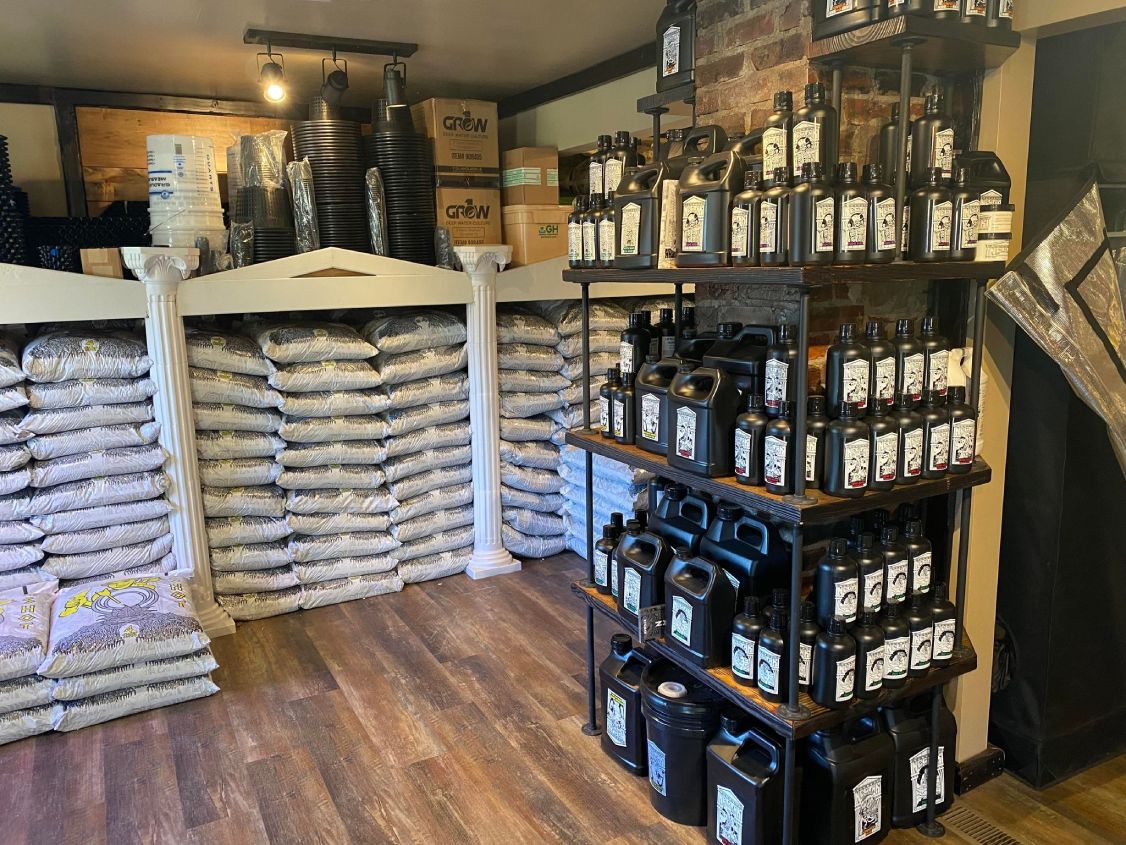Master the Art of Growing with The Indoor Earthworm's Expertise
Wiki Article
Dive Into the Globe of Hydroponics: Discovering Different Kinds
Within the world of hydroponics lies a varied array of growing methods that provide distinct advantages for growing plants without dirt. As we start this expedition of numerous hydroponic systems, we will certainly discover the details of strategies like the Nutrient Movie Method (NFT), Deep Water Society (DWC), Wick System, Ebb and Circulation (Flood and Drainpipe), and Aeroponics. Each method provides an unique technique to supporting plants in a soil-less atmosphere, promising technology and performance in the world of contemporary agriculture.
The Nutrient Movie Technique (NFT)
The Nutrient Movie Technique (NFT) is a hydroponic system that entails a continual circulation of nutrient service over plant roots in a thin movie to advertise reliable nutrient uptake. This approach uses a superficial stream of water which contains liquified nutrients, enabling the plant origins to have consistent accessibility to the essential elements for development - The Indoor Earthworm. The nutrient option moves along all-time low of the channel, speaking to the origins and after that draining away, supplying an extremely oxygenated atmosphere vital for root healthGiven that the nutrient option is recirculated, it calls for much less water contrasted to conventional soil-based horticulture. Furthermore, the controlled atmosphere of the NFT system decreases the threat of nutrient imbalances and illness, leading to much healthier plants.
Deep Water Culture (DWC)
In a DWC system, plants are placed in web pots, allowing their roots to dangle directly into a nutrient service. The trick to success in DWC is preserving the appropriate oxygen levels in the nutrient service to stop origin rot and advertise healthy and balanced plant growth.Furthermore, the straight accessibility to oxygen and nutrients permits plants to uptake what they require extra effectively, frequently resulting in faster growth prices and higher yields contrasted to typical dirt farming techniques. Regulating water temperature and preventing algae growth in the nutrient solution are essential factors to consider when applying a DWC system.
Wick System
In hydroponic growing, the Wick System is a passive technique that makes it possible for plants to draw up nutrition solution through capillary action. This system is suitable and simple for beginners as a result of its simpleness. It is composed of a growing tray loaded with an inert tool like perlite or vermiculite, where plants are put. A wick, typically made from products like cotton or nylon, extends from the expanding tray into a storage tank loaded with the nutrient option. The capillary action of the wick enables the nutrient service to relocate from the storage tank to the expanding tray, making certain a consistent supply of nutrients to the plants' roots. One of the benefits of the Wick System is its inexpensive and ease of configuration. It may check these guys out not be suitable for larger plants or those with high nutrient demands, as the easy nature of the system can lead to uneven vitamins and mineral distribution. On the whole, the Wick System offers a simple and reliable method to practice hydroponic horticulture.Ebb and Flow (Flood and Drainpipe)
Exploring the Ebb and Circulation (Flood and Drain) system provides understanding right into a dynamic hydroponic technique that rotates between flooding and draining pipes the plant origins with nutrient service. you can try these out This system operates by periodically flooding the plant containers with a nutrient remedy from a storage tank and then enabling the excess service to drain back. The process is normally regulated by a timer to make sure routine flooding cycles, providing the roots with oxygen as the service recedes.Ups and downs systems are functional and can suit different plant sizes and types. They provide a good equilibrium of water retention and aeration, promoting healthy and balanced root advancement. The periodic flooding assists supply nutrients directly to the origins, enhancing nutrient uptake performance. Furthermore, the ups and downs activity stops water stagnation, reducing the threat of root rot and various other water-related issues.
This approach is preferred amongst hydroponic fanatics for its simplicity, versatility, and performance to various plant requirements. With proper monitoring and maintenance, the Ebb and Flow system can sustain durable plant growth in a regulated hydroponic environment.
Aeroponics
Using a high-pressure misting system, Aeroponics is an innovative hydroponic technique that puts on hold plant origins in an oxygen-rich setting to promote ideal nutrient absorption and strenuous development. Unlike various other hydroponic methods, which submerge origins in water or a nutrient option, Aeroponics supplies nutrients directly to the origins through a fine mist. This haze is sprayed at routine intervals, guaranteeing that the origins receive a consistent supply of water, oxygen, and nutrients.
Among the vital advantages of Aeroponics is its capacity to maximize nutrient uptake while decreasing water usage. By providing nutrients directly to the origins, plants can absorb them much more effectively, resulting in faster development prices and higher returns. In addition, the oxygen-rich atmosphere created by the misting system boosts origin growth and aids avoid root conditions.
Aeroponics is especially appropriate for expanding leafed eco-friendlies, natural herbs, and various other plants that thrive in oxygenated atmospheres. The Indoor Earthworm. Its effective usage of resources and capacity to advertise fast development make it a preferred selection for hydroponic enthusiasts wanting to achieve optimal outcomes
Conclusion
In verdict, hydroponics provides a range of innovative techniques for growing plants without dirt. From the nutrient film method to deep water society, each technique has its very own benefits and challenges. By recognizing and utilizing these different kinds of hydroponic systems, people can explore new possibilities for sustainable agriculture and take full advantage of plant development in controlled atmospheres.
Report this wiki page